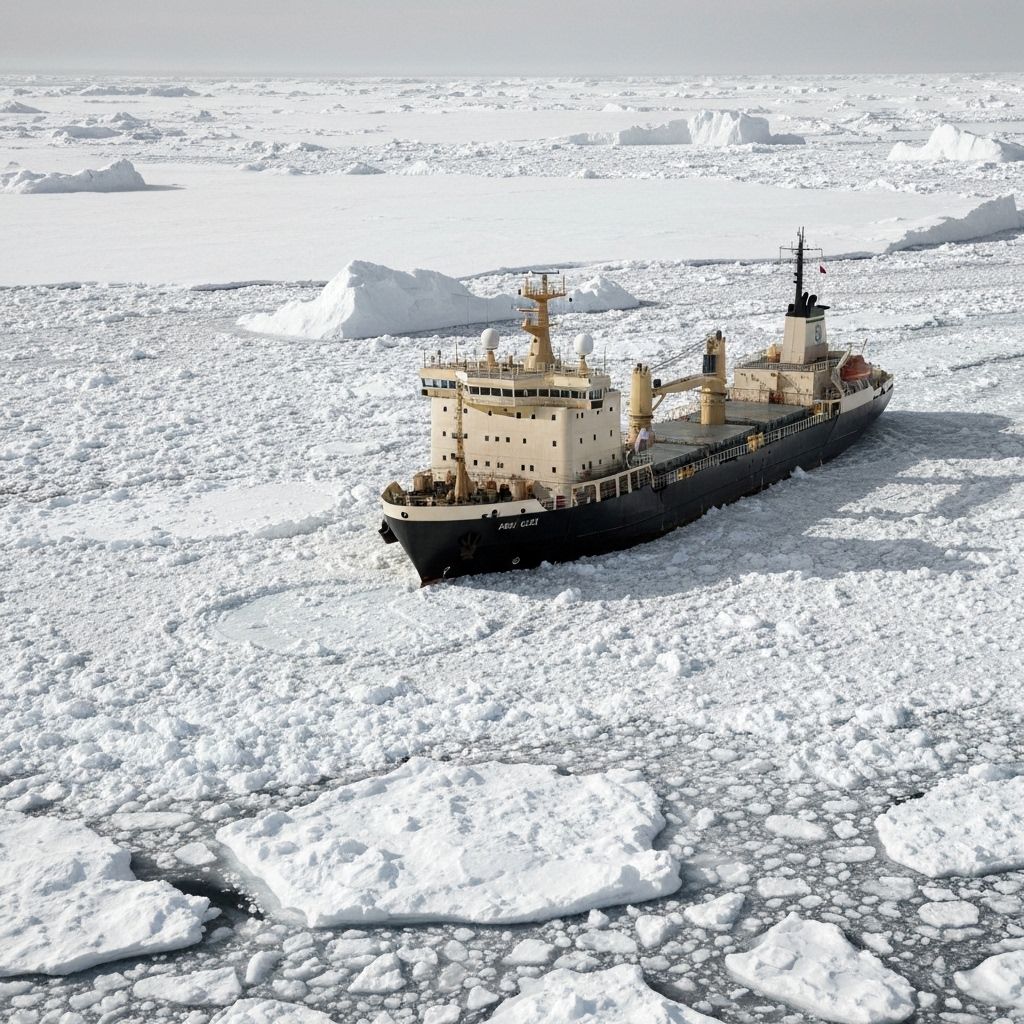The Case for Arctic Trade Routes

Alexandr Shevnin
Economics and International Business Intern

Melting ice, shifting power, and the race for shorter global supply chains. How climate change is opening new trade corridors.
For centuries, the Arctic was a blank spot on trade maps — icebound, inhospitable, and economically irrelevant. That's changing. Climate models suggest that by the 2030s, sections of the Northern Sea Route (NSR) along Russia's Siberian coast could be ice-free for several months of the year. In 2023, Arctic sea ice hit one of its lowest recorded extents, shrinking to 4.23 million km², nearly 40% lower than the 1980s average¹. For shipping companies, that's not an environmental footnote. It's a potential new highway.
The numbers are striking. A container ship moving from Shanghai to Rotterdam via the Suez Canal travels about 19,600 km. The Arctic NSR cuts that distance to roughly 12,800 km — a savings of 6,800 km, or about 30–40% less sailing time². Even accounting for icebreaker escorts and seasonal closures, the time and fuel savings are enough to attract serious interest from major carriers.
But the Arctic isn't just about efficiency. It's about geopolitics. Russia has already declared the NSR as part of its internal waters, establishing military bases and demanding foreign ships request permission to pass. China has labeled itself a "near-Arctic state" and invested in icebreakers, hoping to secure access. The U.S. and EU, wary of both, argue for freedom of navigation in what they see as international waters³. Control of the Arctic seaways could reshape global influence in the same way control of Suez and Panama did in the 20th century.
Economics adds another layer. Lloyd's of London projects that Arctic shipping could handle 15% of Asia–Europe trade by 2050, depending on how quickly ice recedes⁴. That would reroute billions of dollars in cargo away from Suez-dependent economies like Egypt, and shift logistics hubs northward to ports like Murmansk and potentially new terminals in Scandinavia. Energy firms are watching closely too: the Arctic holds an estimated 13% of the world's undiscovered oil and 30% of its undiscovered natural gas⁵.
Still, this isn't a clear win. The Arctic remains unpredictable. Seasonal storms, drifting ice, and limited infrastructure make it risky. Insurance premiums for Arctic voyages are far higher than traditional routes. And environmental opposition is fierce: the same melting that makes the route possible is also the crisis it symbolizes. A single spill in fragile Arctic waters would be catastrophic.
The big takeaway isn't that the Arctic is about to replace Suez or Panama overnight. It's that the map is no longer fixed. Supply chains that once felt locked into narrow chokepoints now have a potential third axis — one defined as much by climate as by commerce. For businesses, that makes Arctic routes less of a curiosity and more of a strategic variable. As ice melts and politics harden, the question isn't if ships will cross the pole, but how much trade will follow them.
Sources
1. NASA Earth Observatory. Arctic Sea Ice Minimum Extent, 2023.
2. International Maritime Organization. Comparative Shipping Distances: Suez vs. Northern Sea Route.
3. Center for Strategic and International Studies (CSIS). Geopolitics of the Arctic Sea Routes (2024).
4. Lloyd's of London. Arctic Shipping Futures (2023).
5. U.S. Geological Survey (USGS). Circum-Arctic Resource Appraisal (2008).